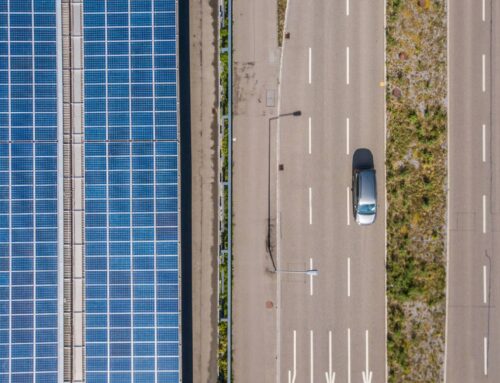This mysterious DOE ‘hit list’ has the clean-energy world on edge
October 10, 2025

The specter of additional, deeper federal funding cuts is haunting the clean-energy sector. A Department of Energy list shared this week with Canary Media suggests the agency is thinking about canceling a whopping $23 billion worth of energy projects.
Well, maybe.
Here’s what we know for sure: Last week, the DOE terminated $7.56 billion in federal funding for grid upgrades and energy projects, which were largely set to benefit Democratic-voting states. Right after, Energy Secretary Chris Wright called the announcement a “partial list” and promised that more cuts were coming — in both blue states and red ones.
From there, it gets fuzzier.
On Tuesday, sources shared a leaked spreadsheet with Canary Media that looks a lot like a follow-up to last week’s hit list. It lists the word “terminate” next to not only the 321 grant cancellations from last week, but hundreds of other projects too.
But despite headlines declaring this a new wave of grant cancellations, the exact nature of the list remains murky. A former DOE official who spoke on condition of anonymity told Canary Media’s Jeff St. John that the list is legitimate and that it represents the grants DOE officials have recommended for cancellation to the White House.
DOE, meanwhile, hasn’t confirmed the list’s authenticity and denies that it has yet decided to cancel any of the projects that appear only on the second list. In a statement, the DOE said it is still conducting an “individualized and thorough review of financial awards made by the previous administration,” and that “no determinations have been made other than what has been previously announced.”
Recipients who appeared only on the second list also say they haven’t heard that their grants will be canceled.
Vikrum Aiyer, global policy head at carbon-capture startup Heirloom, whose major hydrogen-hub project was included on the second list, told Canary Media’s Maria Gallucci that the company wasn’t “aware of a decision from DOE” to cancel its federal award.
Alliant Energy, a utility holding company whose Wisconsin Power and Light subsidiary was listed on the new spreadsheet, said in a statement that it has not been made aware of changes to its DOE grants.
And aside from the two blue-state hydrogen hubs whose funding was cut last week, several of the firms working on the other five hubs have yet to receive cancellation notices, Alexander C. Kaufman reports.
At best, the latest leaked list is just another layer of chaos and uncertainty for federal funding recipients, who are stuck trying to get answers about the status of their projects from a department that has been depleted by layoffs. At worst, though, it’s a harbinger of billions more in cuts to come for innovative American energy projects.
— Jeff St. John, Kari Lydersen, and Alexander C. Kaufman contributed reporting.
More big energy stories
State and federal hurdles pile up for community solar
Community solar is in trouble, and it’s not just because of federal shakeups, Canary Media’s Alison F. Takemura reports. These shared arrays help make solar power accessible to those who can’t put panels on their own roofs, whether that’s because they rent, can’t afford them, or face other barriers. That power can in turn help households reduce their bills.
But the One Big Beautiful Bill Act signed in July set an early sunset for tax credits that can cover as much as half of a community solar array’s cost. And states are also contributing to the decline. Developers in New York, a major community solar market, are facing higher costs for land and permitting, while in Maine, developers have to reckon with changes to its solar net-metering program, as well as lowered compensation and new fees for community solar projects.
Those state challenges, combined with the looming threat of more federal funding cuts, have all led Wood Mackenzie to reduce its forecast of new community solar installations by 8% through 2030.
Global clean energy keeps growing
Two new reports contain some good news for clean energy around the globe. For starters, solar and wind installations outpaced global power demand growth in the first half of this year, according to an analysis out this week from think tank Ember. And in a first, renewables also generated more power than coal over the same period.
The International Energy Agency meanwhile predicts renewables’ global expansion will continue. Renewable power installations will more than double by 2030, it forecasts, with solar accounting for 80% of that new generation. That’s some fast growth, but it’s still well short of the tripling the agency has called for to mitigate the worst effects of climate change.
Clean energy news to know this week
Clean power down under: Australia’s grid operator says replacing its coal-dominated system with 100% renewables is not just a climate-conscious choice, but the lowest-cost choice as well. (Canary Media)
Actual good news for wind: Dominion Energy’s Virginia offshore wind project is on track to start delivering power by March 2026, and is set to be the country’s biggest by far when it’s completed at the end of 2026. (Canary Media)
Tesla’s new price point: Tesla announces a cheaper version of its Model Y SUV and its Model 3 sedan, both with base models starting below $40,000. (CNBC)
Fighting for solar: A labor union, solar installation companies, nonprofits, and other groups sue the Trump administration over its rollback of the $7 billion Solar for All program. (Associated Press)
Coal’s collapse: A low bid for a federal coal lease and the early shutdown of New England’s last coal power plant showcase how the fuel’s economic case continues to shrink even as the Trump administration tries to prop the industry up. (Associated Press, Canary Media)
A windfall for storage: Battery storage startup Base Power raises $1 billion to expand its mission of building home battery systems that it leases to households and uses as a grid resource. (Canary Media)
Weatherization works: Efficiency programs in New England and New York are set to save residents tens of billions of dollars, even as states face pressure to cut spending on such efforts in the name of short-term bill savings, a new report concludes. (Utility Dive)
{
if ($event.target.classList.contains(‘hs-richtext’)) {
if ($event.target.textContent === ‘+ more options’) {
$event.target.remove();
open = true;
}
}
}”
>
read next
Search
RECENT PRESS RELEASES
Related Post



